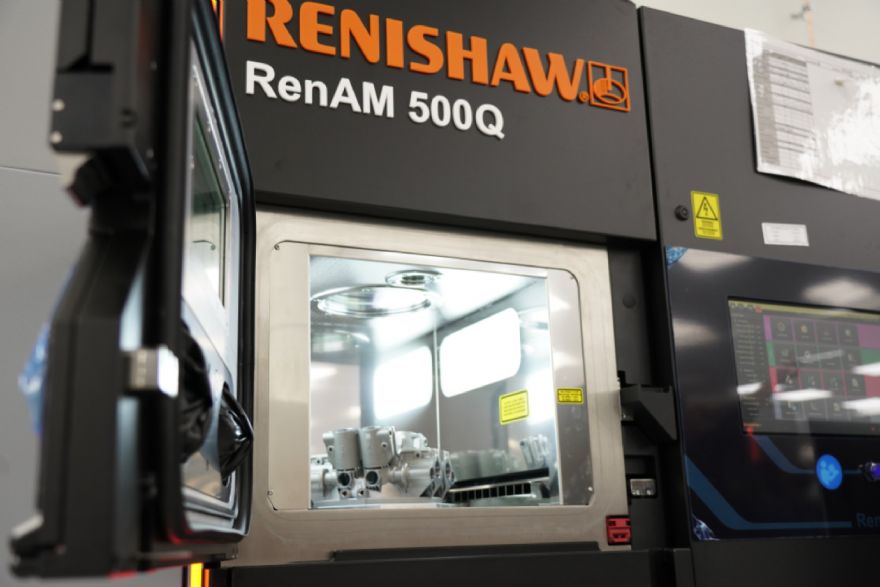
Gloucestershire-based
Renishaw, a global precision engineering and manufacturing technologies company, will display its end-to-end additive manufacturing (AM) solutions at
EMO Hannover 2023, which is taking place from 18-23 September (Stand B32, Hall 6). The company will demonstrate its AM capabilities and how they integrate into the end-to-end process chain, as well as insight into how to use AM to support the future of business and sustainability.
Taking centre stage on the Renishaw stand will be the RenAM 500Q, Renishaw’s renowned ultra-high productivity, multi-laser AM system. The system features four high-power 500W lasers, each able to access the whole powder bed surface simultaneously, helping to achieve significantly higher build rates than previously, improve productivity and lower the cost per part. The system also facilitates build data collection, which manufacturers can use to optimise the manufacturing process and validate that the process and parts meet relevant criteria.
Louise Callanan, director of AM at Renishaw, said: “
EMO is a great opportunity to highlight how AM is increasingly suitable for mass production in a range of industries. Traditionally, AM was reserved for high-value, low-volume applications such as producing prototypes or one-off components, but as the technology has developed, AM can be scaled up to produce much larger volumes of end-use engineered components which still pass rigorous quality control tests.”
“By attending
EMO Hannover 2023 we aim to demonstrate how manufacturers can successfully adopt AM as part of their end-to-end manufacturing process. Introducing AM systems, such as the RenAM 500Q, will provide the speed, accuracy and flexibility required to meet demand, while also reducing cost per part and use of resources.”
AM offers scope for reducing both material usage and the potential to decrease the carbon footprint of components, without compromising on quality. Most powder not used in the manufacturing process can be collected and recycled, while design for AM allows latticing and lightweighting of parts which is not possible with traditional techniques.
Louise Calanan concluded: “As part of
EMO’s focus on sustainability this year we also want to demonstrate the role of AM in the future of manufacturing. We hope to share experiences with other manufacturers about the positive steps we can make to meet sustainability goals in manufacturing, both in AM and further afield.”
EMO is the world’s leading trade fair for production technology. The show champions ‘Innovative Manufacturing’ and provides a platform for innovators to demonstrate the latest trends in the field.